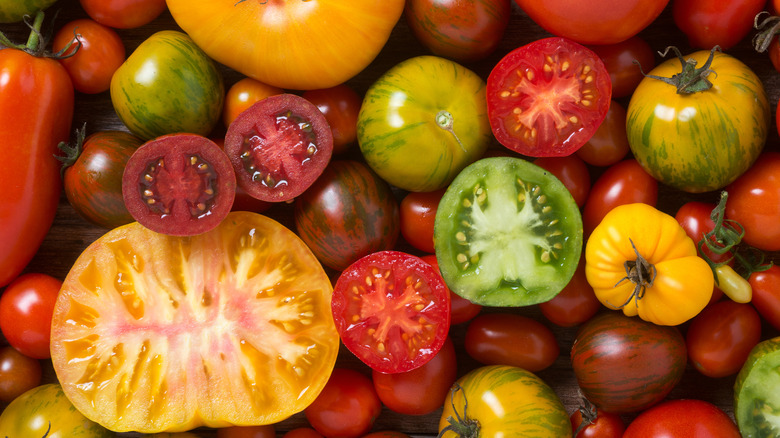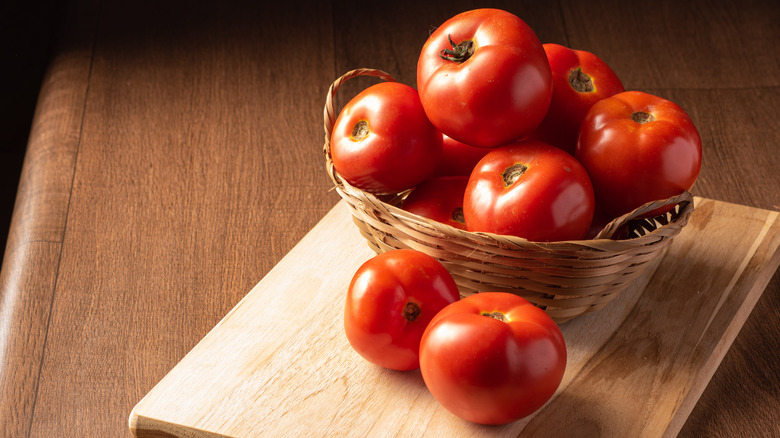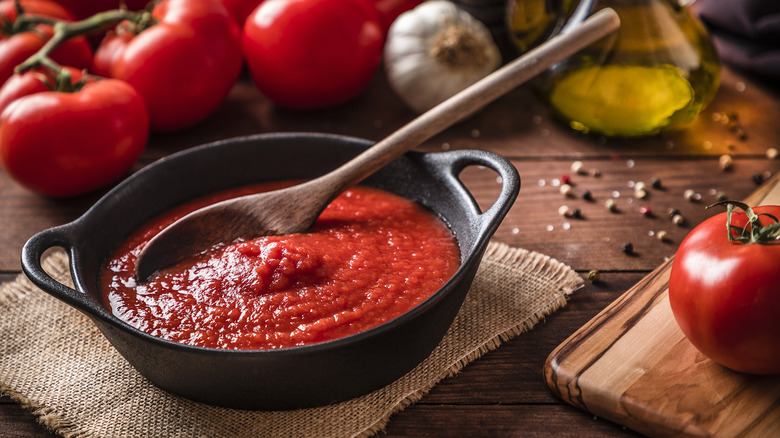Storing Tomatoes The Right Way Takes Two Steps
A tomato is a somewhat unforgiving fruit — eat one at peak ripeness and be rewarded with a bright bite of bliss, but catch one on an off day, and you may find it barely palatable. Timing is key when it comes to finding a great tomato, so shop locally and in season to have the odds most in your favor — but how you store your tomatoes matters, too. What is juicy, firm, and flavorful one moment can become bland and mealy the next if not stored properly. For the best results, keep your tomatoes on the counter until they reach optimal ripeness, then transfer them to the fridge.
This two-step process helps preserve the flavors and textures of your tomatoes so that you can enjoy them at your own pace. If you are wondering how to know when your tomatoes are ripe, the trick is to give them a little sniff and gently press against the skin. They should be fragrant and slightly soft.
Why it matters where you store your tomatoes
A tomato will ripen quickly on your kitchen countertop, especially if placed in a particularly warm and sunny area, and can become overripe in just a matter of days — whereas a ripe tomato can be preserved in the fridge for up to two weeks. While it may sound convenient to store your tomatoes in the fridge to avoid any rush to eat them, it will seem less appealing once you understand how refrigeration affects tomatoes.
Cold temperatures cause an interruption in the ripening process of the tomato that not only halts the development of the complex sweet and savory flavors that give tomatoes their unique taste but also causes the breakdown of cell membranes within the fruit. As a result, the toothsome texture of a quality tomato degrades, leaving you with something mushy and lackluster. For this reason, it is best to avoid placing your tomatoes in the fridge unless you absolutely can't use all your ripe tomatoes up. If you truly have a surplus, go ahead and add them to the fridge — but if you do, be sure to let them come to room temperature before eating them.
What to do with an abundance of tomatoes
If you keep your tomatoes on the counter a day or two too long, and they become overripe, or you place them in the refrigerator too early and find the flavor or texture less than perfect, there are still plenty of ways to enjoy them. The easiest solution for mealy, mushy, mild, or otherwise underwhelming tomatoes is to make a basic tomato sauce. Unlike salad or bruschetta, which require raw tomatoes at peak ripeness, a tomato sauce or any recipe that calls for cooking the tomatoes can still be delicious even if the tomatoes are not at their prime. For extra flavor, you can also throw in the tomato leaves.
Depending on what you are cooking, you may want to weigh the benefits of canned versus fresh tomatoes at the grocery store, to avoid having to worry about storing them in the first place. Another option for long-term preservation is to dehydrate fresh tomatoes using an oven, air fryer, dehydrator, or sunlight.



